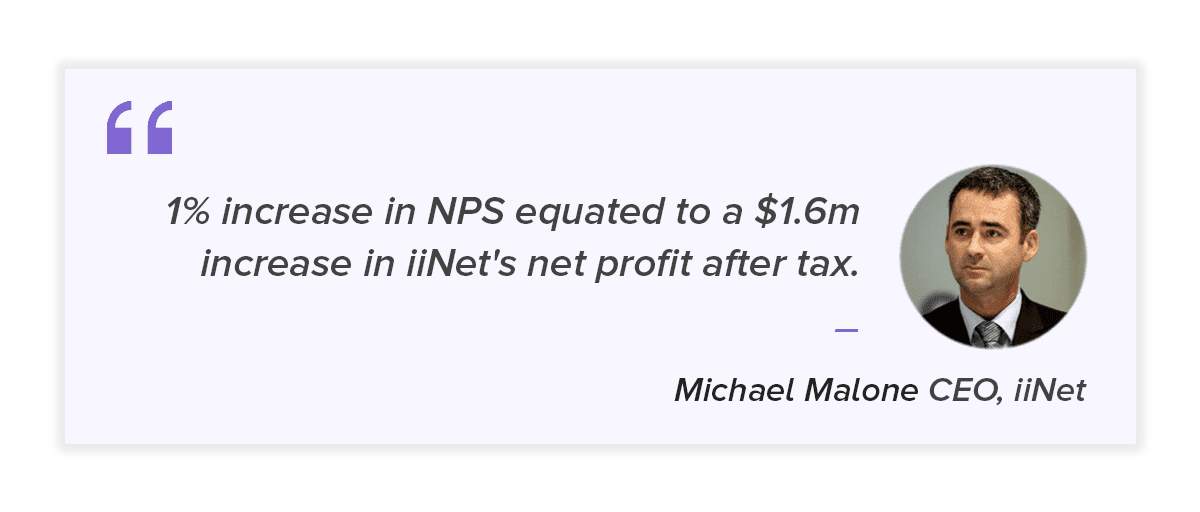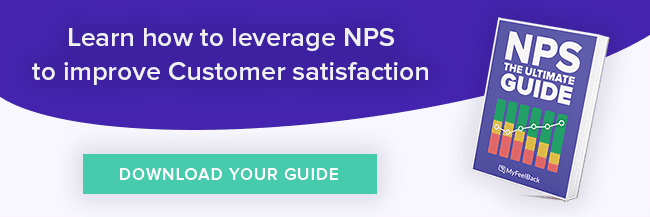Do you know your promoters to detractors ratio? For an ecommerce business, understanding this ratio can make a big difference in establishing a vital client base and thriving business. But what is Net Promoter Score (NPS) all about? How do these businesses manage to create happy customers by using this metric? This article is here to...
Do you know your promoters to detractors ratio? For an ecommerce business, understanding this ratio can make a big difference in establishing a vital client base and thriving business.
But what is Net Promoter Score (NPS) all about? How do these businesses manage to create happy customers by using this metric? This article is here to help you improve your customers’ satisfaction.
What will your Net Promoter Score tell you?
It’s a business’s dream to have loyal and happy customers that stick with you for business.
But customers who are very happy with your business’s products and services are likely to go a step further and recommend your business to friends, colleagues, and associates.
Using Net Promoter Score can reveal various benefits, such as American Express with their shareholder.
“We track NPS all the way to shareholder value. For a promoter who is positive on American Express, we see a 10% to 15% increase in spending and four to five times increased retention, both of which drive shareholder value. In fact our operating expenses associated with service have gone down because we’re more streamlined, and we limit friction points and errors.” American Express.
Your company’s Net Promoter Score is a good reflection of what your customers think about you. It gives your business another way to measure customer satisfaction and, therefore, a sharper competitive edge.
Your NPS score is typically determined through a simple question like : “How likely are you to recommend [company/product name] to a friend or a colleague?” and why.

MyFeelBack – NPS survey example
Participants respond using a numerical rating between 1 and 10. If the participant selects 9 or 10, they are a “promoter”. 7 or 8 makes them a “passive”. And anything below 7 classifies them as a “detractor”.
Response rates can be collated and added to calculate a score, helping you clarify the percentage of detractors to promoters. Your NPS is composed of the balance between promoters and detractors.
Read more: The truth about your NPS Promoters, Detractors and Passives.
This customer-relationship indicator is particularly valuable for digital companies to assess and avoid problems.
The way to a High Net Promoter Score
If you want high levels of customer satisfaction, there are a few things you might need to work on, to build that promoters army you’re dreaming of.
Here a few elements that e-commerce businesses with a high Nps have in common. Get a pen and paper to jot all this down, then you can go and brainstorm.
- A simple and reliable product
The more complicated you make things, the less bothered your customers will be to work it out for themselves.
- Great customer service
It sounds obvious but many companies don’t solve their customer service issues, which leads to eager detractors.
- Offer them a unique experience
You can achieve this by the product itself or with things such as packaging, advertisement, stores and so on. This is where customer centricity will be the most visible.
- Consistency and Reputation
These will say more than words and build brand loyalty. A company becomes accountable and customers rely on them more when it has a certain reputation, so build that up.
- Responsive
This sounds obvious also but still isn’t as deployed as you may think, so make sure your website is tablet and mobile friendly. You should also develop an omnichannel strategy.
Collecting and dealing with complaints, will show your customers they are being considered, and creating personalised interactions with them is a very important aspect.

A last aspect companies with high NPS score have in common is innovation. They mostly get there ideas for innovation by collecting information on their customers desires and needs, they achieve this by using high value and targeted surveys based on context and behavior.
NPS helps eliminate negative word of mouth
Make sure customers are saying something nice about you, using this metric will definitely help you turn things your way.
Referral Candy reports that 65% of new business comes from referrals. And a recent study from Inc.com further reinforces that for today’s customer, reading online reviews is just another step in the shopping process. 84% of participants use online reviews as much as friends to determine which businesses to use.
Unsurprisingly, younger consumers (35% of 16 – 34 year olds) who have grown up with the internet tended to rely on online reviews more than older customers (just over 20% of people aged 55+).

Find out who your advocates are and what you are doing right to ensure positive word of mouth. At the same time, learn from your detractors. What do you need to do better to quiet dissent and turn them into ambassadors?
The higher your NPS score the more you avoid vocal and viral customer scrutiny, crucial for your ecommerce business to thrive.
NPS will help you develop a competitive edge
Ecommerce websites continue to grow exponentially, which means there is a good chance your business is facing stiff competition and not growing at the rate you would like.
Your growth and long-term success in the highly competitive online market will vastly improve if you know what your clients like and dislike, and this is exactly what Nike understood.

Use NPS feedback to address your customers’ problems (service response time, delivery time, website lay out, etc). Each problem a customer faces could effect customer satisfaction.
Slice and dice your data to learn about your customers. Understanding how they interact with your business will help you improve their overall experience, particularly customers who fall into the detractors category.
Find out why they are jumping ship and then wine and dine them by addressing their complaints head on. Build their loyalty and turn them into promoters.
How NPS helps build Loyalty and Growth
The Harvard Business Review has called the NPS “the one number you need to grow”.
Your NPS will add value to your e-commerce business, so the time, energy, and money spent collecting this data is a smart investment.

And although building a platform to collect NPS data may seem like a cumbersome and time-consuming task, MyFeelBack provides an easy-to-use tool which can help you regularly track and monitor your NPS.

MyFeelBack makes it possible to gather and analyze data in real time to help boost customer satisfaction and sales.
Knowing your customers, who they are and what is working and not working for them – will contribute to the success and longevity of your e-commerce business.
Reasons why Ecommerce businesses get a low NPS score
There’s always a lesson you can get out of bad experiences, whether it’s your own or someone else’s. If you are making the following mistakes, stop right now and jump on the success wagon instead.
Here are a few errors that led some companies to a bad Net Promoter Score:
- Limited or poor quality support
If you don’t provide support or don’t act on your customer’s feedback, they’ll end up being your first detractors.
- Short term rentention tactics
They are more hurtfull than anything else. Companies usually blast them every 6 months, with no strategy on the long term.
- You’re not delivering as advertised
This is the cause of fustration for the customer, but also they will simply run away from your business as it means your are not trustworthy
- Agressive or misleading billing and sales techniques
You need to take care of your customers, not agress them with actions such as negative option billing. Show them the bright side!
Although it’s not as visible, NPS can be subject to trends sometimes… This means that an overall attitude is influencing others to also score badly.
Discover what to do once you have data from your NPS.
NPS is no miracle potion that will solve everything for you, but it definitely is a great tool to help you understand what you need to do, to get back on track with your customers’ satisfaction.
If your goal number one is turning these detractors or passives into promoters, ask them how they feel and why they feel that way. It goes without mention that all this will increase your ROI and global performance.








